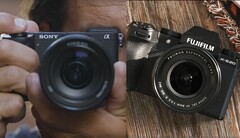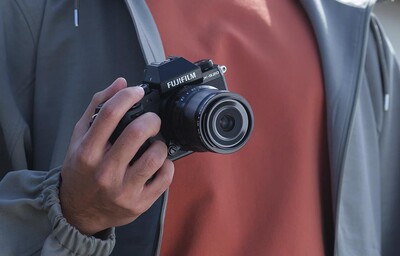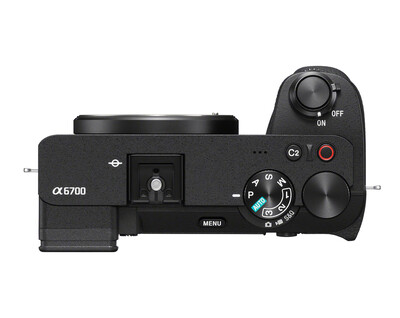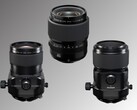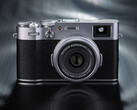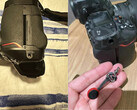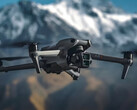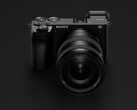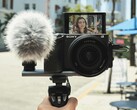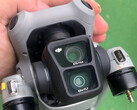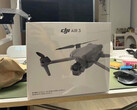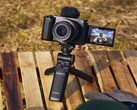1. Video
Given that both the Sony A6700 and Fujifilm X-S20 are positioned as midrange hybrid cameras, it's a given that they would both offer some impressive video features. For its part, the Fujifilm has 3:2, open-gate, 6.2K 30 fps and cropped (1.18x) 4K 60 fps video-recording modes that stand out to those who want to be able to record cinematic shots with the ability to reframe during editing.
Sony's A6700, on the other hand, delivers 4K video recording at up to 120 fps, although that imposes a substantial 1.81x crop. As for more standard video features, the A6700 features 4K video recording downsampled from the 6K sensor output.
The Fujifilm X-S20 also blasts past the Sony A6700 when it comes to output format. While the A6700 and X-S20 both output 4:2:2, 10-bit footage, the Fujifilm offers both Apple ProRes RAW and Blackmagic RAW codec options. The Sony, on the other hand, only offers the regular Sony XAVC S, XAVC S-I, and XAVC HS codecs, which may or not be supported by all editing software.
2. Handling and ergonomics
Both the Sony A6700 and the Fujifilm X-S20 have larger grips than their predecessors. Both cameras also feature a generous helping of dials and buttons, including a scroll wheel on the front of the grip, a mode selector dial on the top of the body, and a customisable thumb dial on the back. Each camera also has a dedicated video record button, and Fujifilm's X-S20 has four customisable modes on the PSAM mode dial. The Sony only has three custom modes in the PSAM dial, but supplements those with three customisable function buttons.
The body of the X-S20 is also littered with buttons, but Fujifilm seems to have taken a different approach. Where Sony gives you a multitude of buttons and leaves it to you to set up what each does, Fujifilm has decided to use dedicated function buttons, instead. The A6700 and X-S20 both feature three-inch articulating touchscreens, but the Sony's screen is a much lower resolution, at only 1.04 million dots, compared to the X-S20's 1.84 million.
Which design is better will depend on how you're used to shooting, but there's something to be said for both Fujifilm's streamlining and Sony's maximalist flexibility.
3. Photography and autofocus
Both the Sony A6700 and the Fujifilm X-S-20 rely on 26-MP BSI CMOS APS-C sensors, meaning both should offer excellent low-light performance. There are a few differences between the implementation of these sensors, though. For starters, the Sony has a slightly lower base ISO, but the Fujifilm has a higher maximum ISO.
Both cameras have updated processors with all the added AI-powered autofocus tricks that come with them, and both the X-S20 and A6700 recognise and lock focus onto subjects admirably, by all accounts. The Sony A6700 has more autofocus points than the Fujifilm X-S20 — 759 points compared to the Fuji's 425.
Ultimately, autofocus performance is neck-and-neck, although reviews do give the edge to the Sony, thanks to the speed and accuracy of its AI-powered subject recognition and autofocus.
As for burst shooting, the Fujifilm X-S20 tops out at 20 fps for full-resolution images using the electronic shutter, with 30 fps possible with a crop. The buffer on the X-S20 tops out at 1000+ images when shooting at 8 fps, and 88 compressed RAW images when shooting at the maximum 30 fps.
Sony's A6700 tops out at 11 fps of continuous stills, and its buffer can handle a virtually unlimited number of JPEGs, although it will get exhausted at 59 RAW images.
Sony's five-axis IBIS is also less capable, topping out at five stops of compensation, while the Fujifilm X-S20's IBIS tops out at seven stops. This gives the Fujifilm X-S20 a substantial advantage in low-light shooting and handheld video.
4. The finer details
Obviously, specifications aren't everything when comparing cameras, and there are a few extra things that set the Fujifilm X-S20 apart from the Sony A6700. One curious feature of Fujifilm's camera line-up is its film simulations and colour processing, both of which aim to reduce the amount of time spent editing by delivering polished JPEG images. While you have the option to shoot RAW, many Fuji shooters end up enamoured with Fujifilm's colour science and film simulations.
Fujifilm's X-S20 also has a much higher rated battery life — at 750 shots compared to the A6700's 570 shots — and neither Fujifilm nor Sony impose any hard limits on video recording times with these cameras.
Given their small form factors, both cameras do eventually overheat when recording video, although the Fujifilm X-S20 will overheat sooner. One YouTube reviewer was unable to get the A6700 to overheat when recording in 4K 30 fps or 60 fps. PetaPixel got the Fujifilm X-S20 to overheat after around 35 minutes of recording at 6.2K 30 fps and 4K 60 fps. Recording in 4K 24 fps, though, resulted in a dead battery before overheating. Fujifilm also sells an after-market cooling fan accessory that completely eliminates all overheating issues.
Given the US$100 price difference, the Sony A6700 makes a lot of sense for people who need high-framerate 4K video, but, for everybody else, the Fujifilm X-S20 presents an excellent value proposition. That is doubly true when considering the US$1,399 XC14-45 mm lens kit.
Buy a Fujfilm X-S20 Mirrorless Digital Camera with XF18-55mm Lens Kit on Amazon.




